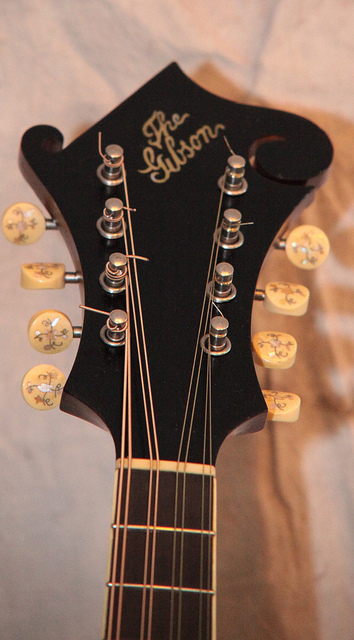Mandolin
Gibson Mandolin-Guitar Manufacturing Co., Ltd. American
Not on view
F-2 model mandolin with a light to dark red sunburst finish, serial number 29224. Two-point body, with points on the upper right and lower right corners, and a distinctive scroll on the upper left corner. The mandolin has a carved, arched top and back, a design patented by Orville Gibson in 1898. Five businessmen bought the name and patent from Orville Gibson in 1902 and started The Gibson Mandolin-Guitar Manufacturing Co., Ltd. The F-2 is built to the same specifications as the F-4 model, but is slightly less decorated. It was introduced in 1902 and discontinued in 1934. The instrument has an oval sound hole with decorative inlaid wood and ivoroid binding. The front and fingerboard are bound in ivoroid. The neck is made of mahogany, the fingerboard is ebony and extends over the sound hole. There are twenty-four nickel-silver frets with mother-of-pearl position dots on the fingerboard and upper edge of the neck. The floating bridge is a modern replacement that has been put on the instrument to make it playable for a modern mandolinist (the original bridge is in the case). Eight steel strings in four courses, tuned in unison pairs like a violin: E, A, D, G. Nickel-silver tailpiece engraved "The Gibson." The scroll headstock is also inlaid with mother-of-pearl reads "The Gibson." Inlaid Handel machine tuners 4-on-a-plate. The instrument has a raised pickguard mounted on metal brackets.
Due to rights restrictions, this image cannot be enlarged, viewed at full screen, or downloaded.
This artwork is meant to be viewed from right to left. Scroll left to view more.




